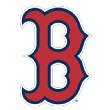I was told that the 2020 MLB draft would be wild, and I was lulled into a false sense of security by last year's chalky top of the draft. We had true mayhem on Day 1, and I'll use the favorite/head-scratcher format to break it down, although there wasn't a truly "what in the world are they doing?" pick. It was more different sorts of strategies, which carried over to Rounds 2-5 on Thursday as teams adjusted to the abbreviated five-round format. But we did have some buzzworthy moments even on Day 2.
My favorite picks of Round 1:

The pick: Asa Lacy
The Royals were one of the picks that was the hardest to pin down in the days leading up to the draft, but everyone knew that Lacy was the guy they wanted -- it just seemed unlikely that he'd slide out of the top three. With Heston Kjerstad and Max Meyer sliding in before Kansas City's turn, Lacy and Austin Martin slid, and the Royals might have put the cherry on top of the three drafts' worth of college pitching sundae.

The pick: Austin Martin
Martin was in the mix to be my top player in the draft for a while. Ultimately, I slotted Spencer Torkelson as the 19th-best player on the pro Top 100 prospects list once he signs and Martin at 36th: still very close.
He's advised by Scott Boras, and that seemed like it contributed to where he went, with clubs trying to cut on their top picks to set up later selections -- but this was the worst-case scenario for Martin and a best-case scenario for the Jays, who soon might have the best young infield in the game.

The pick: Zac Veen
Veen was the consensus top prep player in the draft and narrowly edged out Robert Hassell for my top prep player. He checks so many boxes as a big, projectable athlete with easy actions, big power projection, now performance and promise for more.
Check out highlights of Spruce Creek High School outfielder Zac Veen, selected ninth overall by the Rockies.
His statistical upside goes up even more with Coors Field in the mix. The Rockies got a best-case scenario, as I thought it was unlikely they'd even get Hassell to their pick, but they got Veen instead.

The pick: Mick Abel
Prep righties are the riskiest demographic in the draft and they get even riskier when there's no spring season, and with financial adjustments to the draft, prep players in general get tougher to sign. Combine that with Abel's last public looks being a slightly diminished version of himself late in the summer, and this was a hard selection to get off the ground. One scout described to me all of the hoops you have to jump through internally to take a first-round prep righty this year and compared it to turning around an aircraft carrier.
I love the pick because all the track record and talent and upside elements say Abel would've and should've gone in the top 10, while all of the political/process factors say he should've dropped further. A daring pick by the Phillies was a great move here, as seeking risk is my kind of strategy when it comes with history, tools and performance.

The pick: Nick Bitsko
If you like to seek risk, Bitsko is your guy. As a prospect, he gives you lots of elements to make you feel better -- like the precocious physicality, huge now stuff, dazzling Zoom interviews, quarantine remote training improvements -- but this is still a prep arm with three innings of track record for most teams.
The Rays have the best farm system in baseball by a wide margin and also have the best-run organization in the game, so the process is in place to confidently make a decision like this, and they can survive this pick if it goes sideways. Seeking risk makes perfect sense for Tampa Bay in this situation, and it's part of the reason they're so good.
More picks I liked: Tyler Soderstrom to Oakland (great value and perfect time to go overslot to snag a slipping prospect), Jordan Westburg to Baltimore (developmental/upside college prospect but with the makeup and trajectory to justify continued improvement)
Biggest Round 1 head-scratchers:

The pick: Heston Kjerstad
I get what the Orioles were doing here. They didn't think Martin was as much better than the other options as the price tag suggested, and this set up later picks to spread around the risk. I had Kjerstad ninth in my rankings, which is about where the industry had him, so this should be a nice savings, though I don't know how much yet. My issue is that I think you need either more upside or more certainty at the second overall pick, and Nick Gonzales, Zac Veen, Robert Hassell or Max Meyer would've been better choices for me, even if they cost a little more.

The pick: Nick Yorke
The biggest head-scratcher of the draft does make some sense when you give it context. The Red Sox took my 69th-ranked prospect at 17th overall, so that's a reach by any definition. I think it's clearly about money, though, as Baylor SS Nick Loftin offers comparable if not more hitting production, with a better glove, higher-level performance and a shorter path to the big leagues than Yorke. If Boston wanted this sort of player, it would have picked Loftin here.
Since the Red Sox don't have a second-round pick, this steep cut -- that's what I'm hearing, don't have a number yet -- gives them a prospect they like that probably doesn't get to their next pick. (I heard pre-draft that Yorke was a tough sign in the second round.) This pick saves tons of money, and they now may have the most money as we get into Round 3.
It's important to note that Yorke is a hit-first middle infielder, which is (1) a typically underrated profile, (2) a type of player Tampa Bay took successfully often while new Red Sox chief baseball officer Chaim Bloom was there and (3) the profile of their top prospect and Mookie Betts trade centerpiece Jeter Downs. So, yes, this was a head-scratcher, but it also makes total sense and could even look good by the end of Day 2.

The pick: Jared Shuster
I've heard that his pick is likely below slot, so I get the thinking here as well: Lots of college arms look similar, so take the cheapest one that's in your mix on talent, and spend the savings later. Atlanta did this last year, going under at all of its high picks and spending what was left over on the prep prospects who got to them. I generally don't love this trade down, kick-the-can-down-the-road approach to things, but the execution of the Braves' high picks last year was strong and I had Shuster as a late-first-day talent, so it's fine.
Similar to Boston, Atlanta doesn't have a full complement of picks, so cutting with its top pick gives it some flexibility later. The thing to watch here is the Braves don't have dozens of picks to use to spread the money around like last year, so they have a handful of picks to find falling talents to match their draft pool, and thus have to be more aggressive making selections on Day 2.

Kansas City Royals
The pick: Nick Loftin
This one isn't a head-scratcher for K.C.: I love the pick where the Royals got him. I can't figure out why no one took him earlier. In a draft where shortstops are pushed up by draft models and college players are pushed up for a number of reasons, how did so many teams pass on Loftin? I heard he has a nice overslot number here, but college juniors can't slide that far with bonus demands no matter how hard they try. I heard Loftin had a big deal behind the K.C. pick if he slid further and some clubs in the late first were kicking the tires but liked their slot options enough. I was told Loftin took a big step forward this spring and was drawing Nico Hoerner comps, so clubs in the 20s will feel foolish if that's how this plays out. K.C. had a great first night.



Colorado Rockies/Cleveland Indians/Tampa Bay Rays
The pick: Drew Romo/Tanner Burns/Alika Williams
I wasn't nuts about any of these three picks, but they were all fine on value. I just had other prospects I preferred. I'm almost shocked Clayton Beeter didn't go on Day 1, with Max Meyer-level TrackMan pure stuff, when the weakness was limited looks (didn't hurt Bitsko) and a Tommy John surgery, which teams don't worry about as much. Other TJ-recoverers didn't go last night, so look for all three to go off the board soon on Day 2.
Romo has questions on his bat, and prep catchers are the next-riskiest demographic behind prep righties. Burns had concerns from many teams about his shoulder/arm issues at Auburn and I thought there was a chance he'd go back to Auburn, but those concerns are more about projecting injuries rather than having a significant one in his past. Williams is a developmental collegiate player who needs a swing rework to get to more power but is a premium athlete. Another upside pick for Tampa Bay like Masyn Winn or Tanner Witt would be more what I'd expect from them at a high pick.
Day 2 thoughts
Score one for the Gators
One of the big winners of Day 2 was the University of Florida. The Gators' two top veteran starters, Tommy Mace and Jack Leftwich, both went undrafted, but fit in the second and third rounds, respectively, based on talent. Both put out big signability numbers and had the potential to go higher with a strong spring but didn't get the chance.
On top of that, Florida saw two top-100 talents -- prep commits LF Sterlin Thompson and SS Colby Halter -- not get drafted through five rounds. Thompson will be sophomore-eligible in 2022 and was a second-round talent with a big hit/power combo on some clubs' boards. Halter is a hit-first, heady player from the Jacksonville area who plays the middle infield but has more average-type tools. Similar things were said about fifth overall pick Austin Martin when he opted to go to Vanderbilt -- admittedly a best-case scenario for Halter. Prep commit LHP Timmy Manning also would have gone in the top five rounds if he were signable.
Also talented enough to go in the fourth or fifth round: 2B Jacob Young, 3B Cory Acton and RHP Christian Scott. The Gators should be loaded next season.
Tool check
Some of the biggest tools selected on Day 2, with a nod to TrackMan Baseball's figures provided for the draft broadcast:
Round 2: The fastballs of prep righties Jared Jones (44th to the Pirates) and Jared Kelley (47th to the White Sox) have been up to 100 mph. LHP Burl Carraway (51st to the Cubs) has a 70-grade fastball and a potential 60-grade curveball and slider (which he learned from Clayton Kershaw). RHP J.T. Ginn (52nd to the Mets) has three potential 60-grade pitches (fastball, slider, changeup). SS Masyn Winn is a 65-grade runner with a 70-grade arm and 55-grade power potential to go with two potential 70-grade pitches in his fastball up to 99 mph and his hellacious curveball. RHP Kyle Nicolas (61st to the Marlins) hit 100 mph on Cape Cod last summer and RHP Clayton Beeter (66th to the Dodgers) had the best raw stuff in the whole draft, headlined by a top-of-the-scale 80-grade curveball. RHP Alex Santos (72nd to the Astros) has the highest average fastball spin in the whole draft at 2,612 rpm.
Round 3: RHP Bryce Bonnin (84th to the Reds) averaged 94.4 mph this year (10th among qualifying pitchers) and RHP Cole Wilcox (80th to the Padres) averaged 94.8 mph, which was ninth, and both did it in starting roles. RHP Tekoah Roby (86th to the Rangers) had the ninth-highest average curveball spin rate (2,744 rpm) recorded in 2019 among all 2020 draft-eligible pitchers. SS Casey Martin (87th to the Phillies) is an 80 runner. RHP Tyler Brown (101st to the Astros) had the fourth-highest average fastball spin rate in 2020 and third highest in 2019 at 2,500-plus rpms, along with the sixth-highest fastball extension of 2019 at 7 feet.
Rounds 4 and 5: RHP R.J. Dabovich (114th to the Giants) was up to 99 mph this spring in relief, but it wasn't recorded by TrackMan. LHP Luke Little (117th to the Cubs) hit 105 per Pocket Radar in a quarantine bullpen but has been up to 100 mph on guns in game situations. RHP Will Klein (135th to the Royals) was up to 99 mph last summer in the Northwoods League. RHP Joe Boyle (143rd to the Reds) has hit 100 mph for me in the past and averaged 98.0 mph in 2019, tops among everyone in the 2020 draft class. RF Baron Radcliff (146th to the Phillies) has massive 70-grade raw power and shows it in games: He had the third-highest hard-hit rate among qualified hitters (66%) in 2019 and the hardest-hit ball (116.3 mph) along with the farthest-hit ball (471 feet) of any 2020 prospect in the 2019 or 2020 seasons at any level with a TrackMan unit. LHP Shane Drohan (148th to the Red Sox) has a nasty 65-grade curveball that has the third-highest spin in 2020 among this draft class (2,747 rpm).
